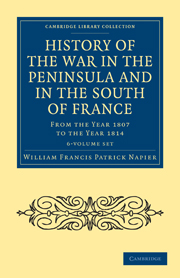 I used to love Little Grey Rabbit – calm, loving, domestic, tolerant of the foibles of her ‘family’ of bumptious Hare and vain, petty Squirrel. The book I remember best was Little Grey Rabbit’s Party, in which (the clue is in the title) the animals decide to have a party. Invitations are sent out, which include the mysterious acronym ‘RSVP’. This stood for ‘Rat Shan’t Visit Party’, and for quite a number of years I believed that this was indeed what it stood for.
I used to love Little Grey Rabbit – calm, loving, domestic, tolerant of the foibles of her ‘family’ of bumptious Hare and vain, petty Squirrel. The book I remember best was Little Grey Rabbit’s Party, in which (the clue is in the title) the animals decide to have a party. Invitations are sent out, which include the mysterious acronym ‘RSVP’. This stood for ‘Rat Shan’t Visit Party’, and for quite a number of years I believed that this was indeed what it stood for.
Moving on through Alison Uttley’s oeuvre, I discovered A Traveller in Time in the school library, adored it, and eventually found a paperback copy of my own in a local bookshop for the appallingly high price of 7/6d – that’s 35p to you young folks. I can’t remember how I scraped the money together to pay for it, but it struck me as a piece of bare-faced greed on the part of Messrs Faber and Faber, given that most Puffin books at the time cost only 3/6d. (However, its binding has survived the years rather better than most of my Puffins…)
I then came across The Country Child, at 4/– (20p) in Penguin’s ‘Peacock’ series, which was aimed at what I suppose would be called the ‘young adult market’ these days, though when it was first published in 1931 it was Uttley’s first book for adults. A wonderful evocation of a child’s life in the Derbyshire countryside in the late Victorian period, it is autobiographical, and beautifully accompanied (in my edition, at any rate) by C.N. Tunnicliffe’s exquisite drawings.
The reason for this self-indulgent preamble is that it was in The Country Child that I first came across ‘Pepper’s Ghost’, featuring in the village fair during ‘Wakes Week’ – sited in a booth next to the fat woman and the calf with two heads, it was described as a play, which ‘frightened Susan so that she pinched Becky’s fingers, and frightened Becky [the farm servant] so that she forgot her modesty and grasped Gabriel’s hand’. Gabriel was the itinerant oatcake-seller, and Becky’s suitor: he ‘explained in a lordly way’ that ‘it’s only illusion, done with looking-glasses and such’.
I assumed that ‘Pepper’s Ghost’ was in fact a play, using stage illusion to make the ghost of Mr Pepper appear at a critical point in the drama, but thanks to the Cambridge Library Collection, I now know better. John Henry Pepper (1821–1900) was in fact a scientist – he liked to call himself ‘Professor Pepper’. He was trained as a chemist, and after holding various teaching posts, in 1852 he became director of the Royal Polytechnic Institution in Regent Street, London (later subsumed into the Polytechnic of Central London, now the University of Westminster).
The Institution had been founded in 1838 as a place ‘where the Public, at little expense, may acquire practical knowledge of the various arts and branches of science connected with manufacturers, mining operations and rural economy’, and Prince Albert became its patron. Pepper established evening classes in both conventional educational subjects and practical skills. He also incorporated experiments, illusions and magic lanterns into his popular science lectures. On Christmas Eve 1862, he presented for the first time his stage-show illusion called ‘the ghost’, which involved using strategically placed pieces of glass and specific lighting in order to create the appearance of insubstantial and ghostly figures on stage. The illusion was immensely popular in the second half of the nineteenth century – it was visited by the Prince and Princess of Wales, and a command performance was given at Windsor for Queen Victoria.
However, the equipment used to create the illusion was invented not by Pepper, but by one Henry Dircks, who in 1858 had sent to the British Association a specification for apparatus to create ‘spectral optical illusions’. Professional entertainers did not see its potential, but Pepper took it up, and he and Dircks took out a patent on the apparatus in February 1863. They later fell out, in stereotypically theatrical style, over the size of their respective names in their advertising material, and the ghost became Pepper’s alone.
He exhibited it at the Crystal Palace, at various London theatres, in Paris, and in New York. In 1874–9 he went on an extended tour of the United States and Canada, and then travelled to Australia, where after touring for two years he settled in Brisbane and reverted to his previous career, as a public analyst.
In 1889 he returned to England, and in 1890, published a short and rather peculiar book, of which the image on the front board is reproduced on our front cover. It is called The True History of the Ghost, and All about Metempsychosis. It does not in fact contain anything about the transmigration of souls, but it does reveal up to a point, and with diagrams, the way some of Pepper’s illusions were created. It also includes the patent and specification which Dircks and Pepper took out in 1863, attempts at piracy by rival showmen, and descriptions and reviews of various performances. (He had received ‘special written permission’ from Charles Dickens to stage a version of his Christmas story, ‘The Haunted Man’.) Not souls but objects were transmigrated in Pepper’s other famous stage routine: a basket of sausages became a little dog, oranges metamorphosed into jars of marmalade, a tea-chest into a tea-tray, with a steaming teapot, cups, etc., which were served ‘to the ladies in the reserved seats only – such is the blighting influence of cash, which caused the one-shilling people to be neglected and the eighteenpenny-reserved-seat folks to have their teas’.
Pepper ends this curious amalgamation of narratives by announcing that ‘by the time these pages are read, it is hoped the ghost will be in full career once more, and if the author only receives a tenth part of the great patronage he received in 1863, he will be amply repaid for all his exertions in reproducing the ghost illusion’. However, public taste had become more sophisticated (the first known moving pictures had been shot in 1888), and the planned revival failed. The Professor ‘retired into private life’, was apparently received into the Church of Rome, and died in March 1900. He seems to have been a strange mixture of serious scientist and irrepressible showman: he would probably have done brilliantly on television…
Caroline



Pingback: Happy New Year! | Cambridge Library Collection Blog